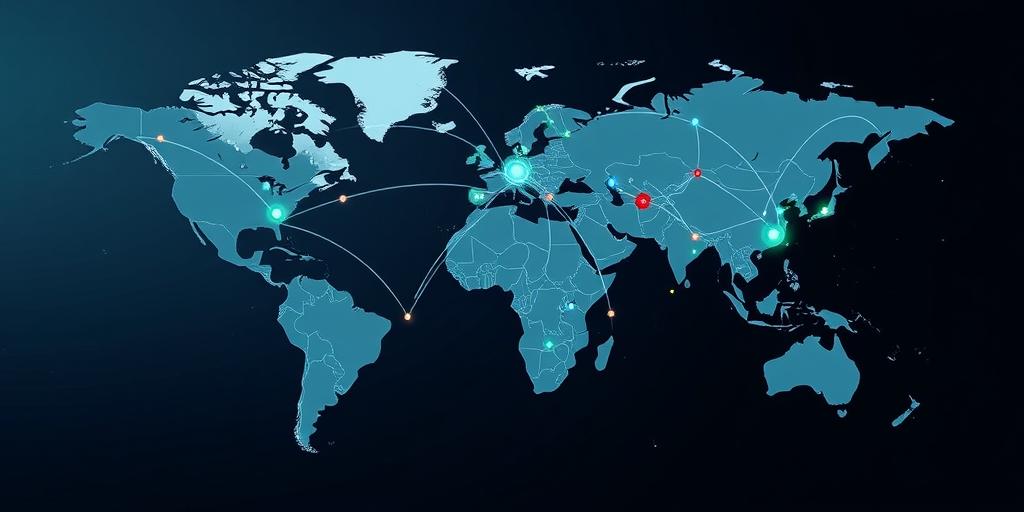The Geography of Innovation and Economic Growth
Innovation is not evenly distributed across the globe. Certain regions consistently outperform others in generating new ideas, technologies, and business models. Understanding the geographic factors that drive innovation is crucial for fostering economic growth and development. This post explores the key elements that contribute to the geography of innovation.
1. Concentration of Talent
Innovation clusters often emerge where there is a high concentration of skilled workers, researchers, and entrepreneurs. These talent pools foster collaboration, knowledge sharing, and competition, all of which are essential for driving innovation. Key factors that attract talent include:
- Universities and Research Institutions: Proximity to leading academic institutions provides access to cutting-edge research, talented graduates, and opportunities for collaboration.
- Quality of Life: Regions with a high quality of life, including good schools, healthcare, and cultural amenities, are more likely to attract and retain skilled workers.
- Industry Ecosystems: Established industries create ecosystems that support innovation by providing access to funding, mentorship, and market opportunities.
2. Access to Capital
Innovation requires investment. Regions with robust financial markets and access to venture capital are more likely to support innovative ventures. Key factors that facilitate access to capital include:
- Venture Capital Firms: The presence of venture capital firms signals a willingness to invest in high-risk, high-reward ventures.
- Angel Investors: Angel investors provide early-stage funding and mentorship to startups.
- Government Funding: Government grants and tax incentives can help de-risk innovation and encourage private investment.
3. Supportive Regulatory Environment
The regulatory environment can either stimulate or stifle innovation. Regions with flexible regulations, intellectual property protection, and streamlined business processes are more likely to attract innovative companies. Key considerations include:
- Intellectual Property Rights: Strong intellectual property protection incentivizes innovation by allowing companies to capture the economic benefits of their inventions.
- Ease of Doing Business: Streamlined regulatory processes reduce the time and cost of starting and running a business.
- Openness to Immigration: Immigration policies that attract skilled workers and entrepreneurs can boost innovation by increasing the diversity of talent.
4. Network Effects and Collaboration
Innovation often occurs at the intersection of different ideas and disciplines. Regions that foster collaboration between universities, industry, and government are more likely to generate breakthrough innovations. Key elements of a collaborative ecosystem include:
- Industry-Academia Partnerships: Partnerships between universities and industry can accelerate the translation of research into commercial products.
- Incubators and Accelerators: Incubators and accelerators provide startups with resources, mentorship, and access to networks.
- Industry Associations: Industry associations facilitate collaboration and knowledge sharing among companies in the same sector.
5. Cultural Factors
Cultural attitudes towards risk, creativity, and entrepreneurship can also influence the geography of innovation. Regions with a culture that embraces experimentation, celebrates failure, and values innovation are more likely to foster a thriving innovation ecosystem. Key cultural factors include:
- Tolerance for Risk: A willingness to take risks and experiment with new ideas is essential for innovation.
- Entrepreneurial Mindset: A culture that celebrates entrepreneurship and provides role models for aspiring founders can inspire more people to start businesses.
- Openness to New Ideas: A willingness to embrace new ideas and challenge the status quo is crucial for driving innovation.
Conclusion
The geography of innovation is shaped by a complex interplay of factors, including the concentration of talent, access to capital, a supportive regulatory environment, network effects, and cultural factors. By understanding these elements, policymakers and business leaders can create environments that foster innovation and drive economic growth. Investing in education, infrastructure, and supportive policies can help regions attract talent, encourage investment, and create a culture that values innovation.









